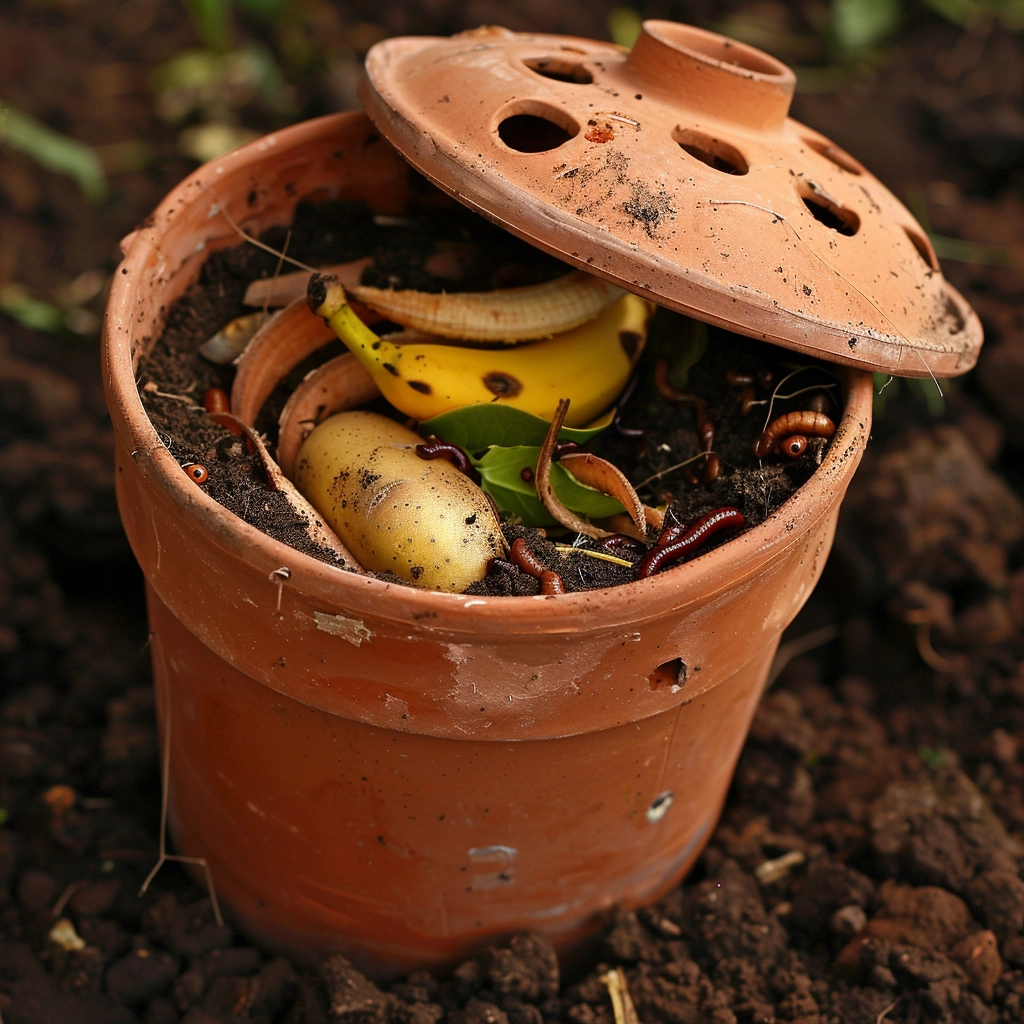This post contains affiliate links. I may earn a commission from purchases made through these links. I only recommend products I've personally used. Your trust is important, and I aim to provide valuable recommendations. Thank you for your support!

Vermicomposting, the process of using worms to break down organic waste into nutrient-rich compost, is not just a sustainable gardening practice but also a fascinating journey into the world of nature’s recyclers. By enlisting the help of these humble creatures, you can turn kitchen scraps and yard waste into black gold for your garden. In this comprehensive guide, we’ll delve into the why, how, and what of vermicomposting, empowering you to embark on your own vermicomposting adventure.
Why Vermicomposting? Vermicomposting offers a plethora of benefits, both for your garden and the environment. Firstly, it provides a sustainable solution for managing organic waste, reducing the burden on landfills and minimizing greenhouse gas emissions. Additionally, vermicompost, the end product of vermicomposting, is a nutrient-rich fertilizer that improves soil structure, enhances microbial activity, and promotes plant growth. Unlike synthetic fertilizers, vermicompost releases nutrients slowly, nourishing plants over time and reducing the risk of nutrient leaching. Moreover, vermicomposting can be done indoors or outdoors, making it accessible to urban dwellers and gardeners with limited space.
Getting Started: To start your vermicomposting journey, you’ll need a few essentials:
- Worm Bin: Choose a suitable container for your worms, such as a plastic or wooden bin with ventilation holes and a lid to maintain moisture levels and prevent pests.
- Bedding Material: Provide a cozy bedding for your worms using shredded newspaper, cardboard, or coconut coir. Moistened bedding creates a conducive environment for worms and helps regulate moisture.
- Red Worms: Invest in Eisenia fetida or Eisenia andrei, commonly known as red wigglers or red worms, which are voracious eaters and thrive in composting environments.
- Organic Waste: Collect kitchen scraps like fruit and vegetable peels, coffee grounds, and eggshells, as well as yard waste such as grass clippings and leaves, to feed your worms.

The Vermicomposting Process: Once you have assembled your materials, follow these simple steps to kickstart the vermicomposting process:
- Bedding Preparation: Fill your worm bin with moistened bedding material, fluffing it up to create air pockets and ensure adequate aeration.
- Introduce Worms: Gently add your red worms to the bedding, distributing them evenly throughout the bin.
- Feeding Time: Start feeding your worms small amounts of organic waste, burying the scraps beneath the bedding to prevent odor and fruit fly infestations.
- Maintenance: Monitor moisture levels regularly and adjust as needed by misting the bedding with water or adding dry bedding to absorb excess moisture. Stir the compost occasionally to aerate and distribute nutrients.
- Harvesting: After several weeks to months, depending on the size of your worm bin and the feeding rate, your vermicompost will be ready for harvesting. Scoop out the finished compost from the bottom of the bin, leaving the worms and undecomposed material behind.
Tips for Success:
- Avoid feeding your worms citrus fruits, onions, garlic, meat, dairy, and oily foods, which can attract pests and produce foul odors.
- Maintain a balanced carbon-to-nitrogen ratio in your worm bin by adding equal parts of green (nitrogen-rich) and brown (carbon-rich) materials.
- Keep your worm bin in a shaded area with temperatures ranging from 55°F to 77°F (13°C to 25°C) to ensure optimal conditions for worm activity.
- If you notice any problems such as foul odors, excessive moisture, or fruit fly infestations, adjust your feeding habits and bedding material accordingly.
In Conclusion: Vermicomposting is not just a method of waste management; it’s a journey of discovery and stewardship. By harnessing the power of worms, you can transform organic waste into a valuable resource for your garden while reducing your ecological footprint. Whether you’re a seasoned gardener or a novice enthusiast, vermicomposting offers a simple yet rewarding way to connect with nature and cultivate a healthier planet, one worm at a time. So, roll up your sleeves, gather your worms, and embark on your vermicomposting adventure today!
Ready to start your own vermicomposting journey? Consider investing in a recommended vermicomposting terracotta bin to create a stylish and eco-friendly composting system for your home.

No responses yet